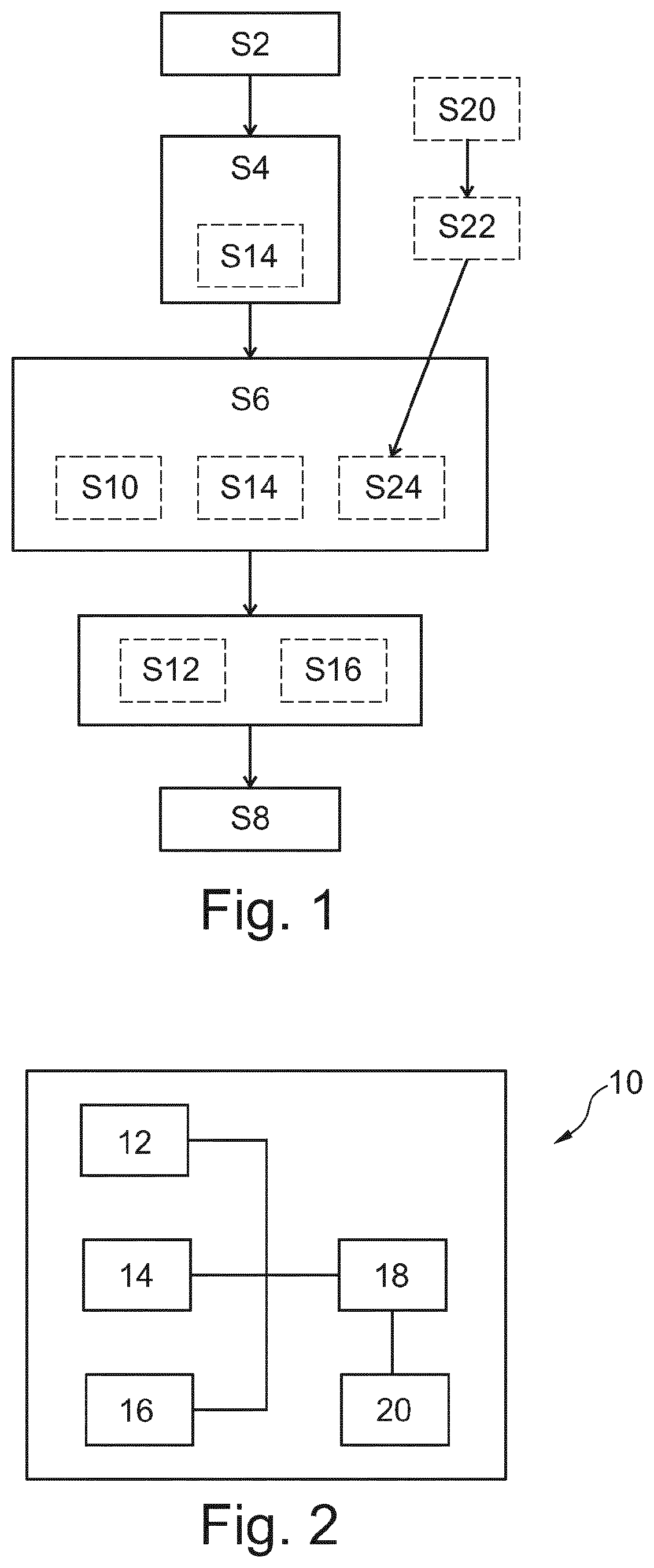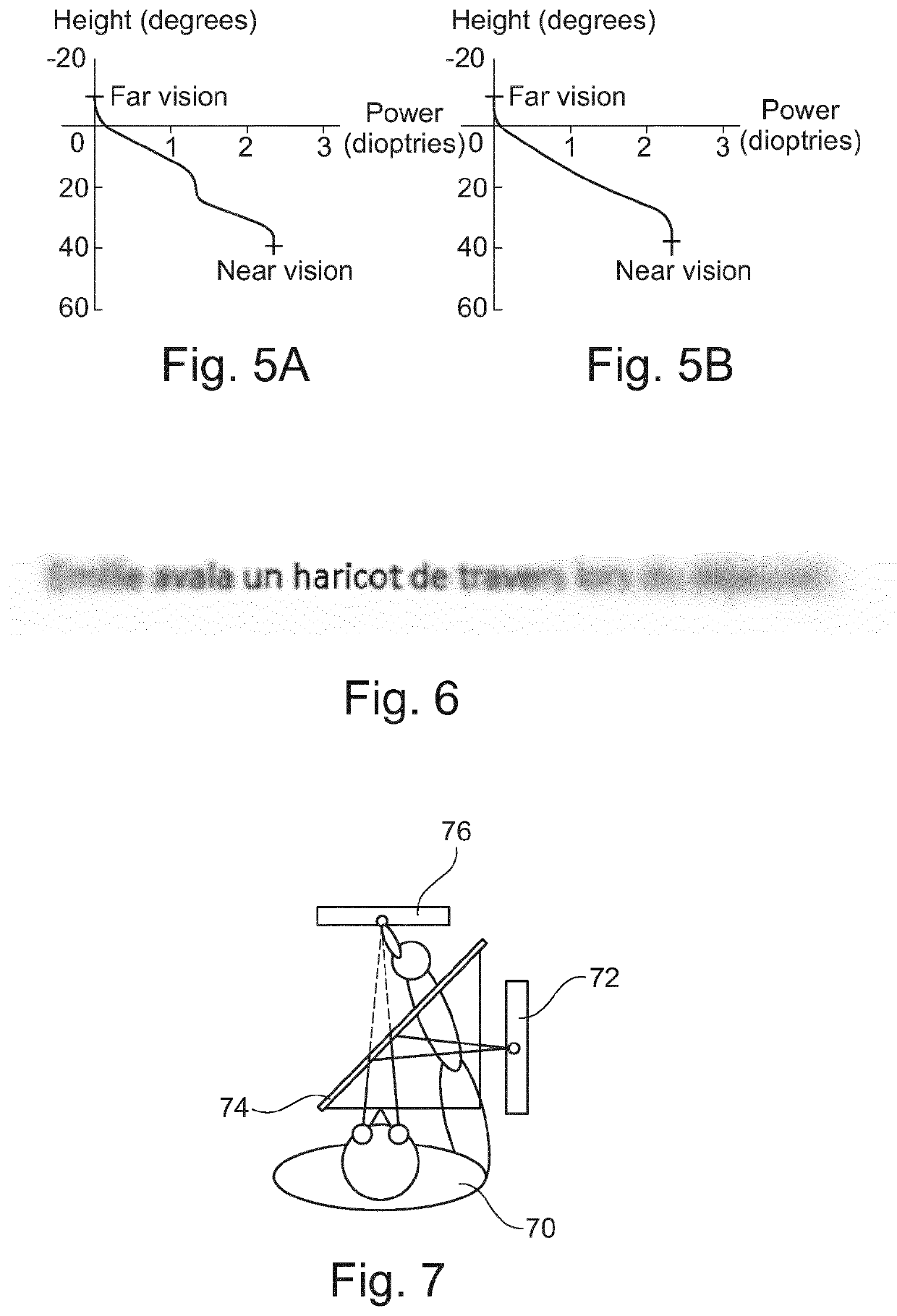Method and system for determining an optical system intended to equip a person on the basis of the adaptability of the person to a visual and/or proprioceptive modification of his/her environment
a technology of optical system and adaptability, applied in the direction of optics, optical parts, instruments, etc., can solve the problems of blurring, different power correction values, and generation of aberrations
- Summary
- Abstract
- Description
- Claims
- Application Information
AI Technical Summary
Benefits of technology
Problems solved by technology
Method used
Image
Examples
example 1
Adaptation of Eve-Head Coordination and Determining of a Customized PAL Design
[0109]Ophthalmic lenses having a progressive power ensure clear vision at all distances for people who have lost, completely or not, the ability to accommodate. This continuous progression of power from the top to the bottom of the lens, along a meridian, is accompanied by optical distortions in the periphery. Even if these distortions can not be removed from the lens, their distribution can be precisely controlled. In this first example, the method allows providing a new criterion for the customized distribution of these peripheral deformations. This criterion is based on the ability of the wearer to adapt to visual or proprioceptive constraints in his strategy of coordination of his eyes and his head to explore his environment.
[0110]To this end, a reference eye-head coordination is first measured. It can be the “horizontal” strategy linked to the exploration of targets presented to the right or left of t...
example 2
Visuo-Proprioceptive Adaptation and Intermediate Distance Work
[0120]The advantage of a lens with continuous power progression is to provide the wearer with clear vision at all distances. Nevetheless, this progression of power is necessarily accompanied by deformations at the periphery. The faster the progression, the greater the distortion. It is in the so-called “intermediate vision” zone that the power progression is conventionally the fastest in order to ensure the good compensation value in far vision and near vision. This intermediate vision corresponds to the visual and visuomotor distances involved in work at the office and on screen in particular. The deformations induced by the progression of power therefore generate visual constraints to which the wearer must adapt in order to maintain good performance and good comfort. The objective of this example of implementation of the invention is therefore to measure the capacities of visual and proprioceptive adaptation in the cont...
example 3
Adaptation to Blur and Distortions
[0124]Thanks to the invention, a new criterion for the personal distribution of the peripheral distortions can be provided, distortions and blur, as a function of the capacities of the person to adapt to these constraints.
[0125]As in the previous examples, the adaptability of a person to an abrupt or gradual change in his environment is assessed. In the present example, distortions and / or blur are added in the scenes perceived by the person and the effect of these constraints on the performance and the time required to recover the level of performance the person had before adding distortions / blur are evaluated. These elements can also be evaluated after the removal of the visual constraints by determining what is called the after-effect of these constraints.
[0126]Distortions and blur could be induced using special lenses positioned in a test spectacle for example. For example, the person might have to perform tasks on a digital tablet in close-up vi...
PUM
 Login to View More
Login to View More Abstract
Description
Claims
Application Information
 Login to View More
Login to View More - R&D
- Intellectual Property
- Life Sciences
- Materials
- Tech Scout
- Unparalleled Data Quality
- Higher Quality Content
- 60% Fewer Hallucinations
Browse by: Latest US Patents, China's latest patents, Technical Efficacy Thesaurus, Application Domain, Technology Topic, Popular Technical Reports.
© 2025 PatSnap. All rights reserved.Legal|Privacy policy|Modern Slavery Act Transparency Statement|Sitemap|About US| Contact US: help@patsnap.com



